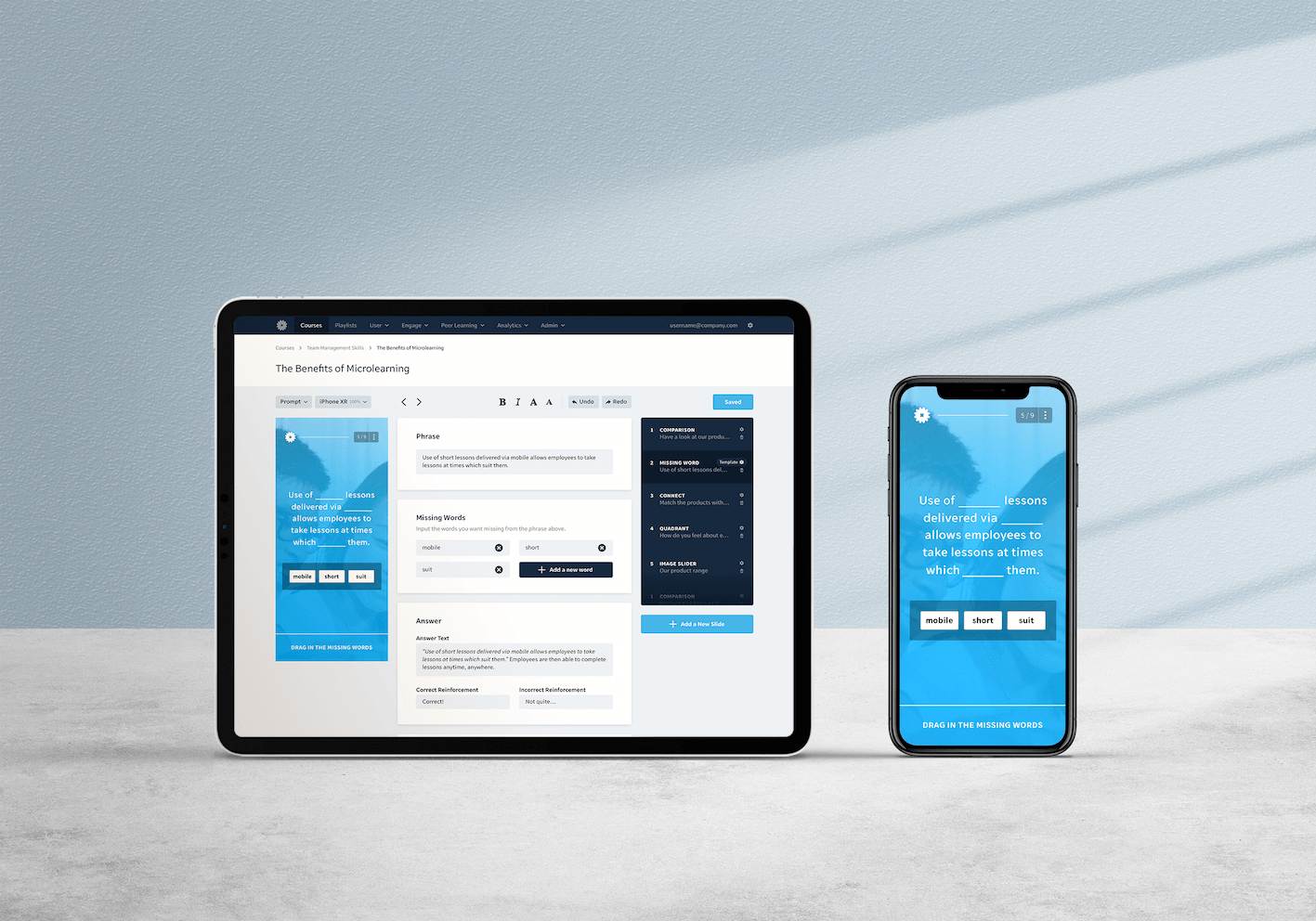A Practical Guide To Drive Tangible Results
Microlearning! Whether you’ve heard of it before or not, you are probably familiar with the concept of breaking up instructions into small parts. Microlearning has been discussed a lot by leading Learning Management Systems (LMS), so let's take a look at how you can create product training using that concept.
Wait, What Is Microlearning Again?
Microlearning is characterized by concise and targeted learning experiences that cover a specific learning objective that is part of a larger learning curriculum. These bite-sized micro lessons use a variety of learning styles and focus on delivering rich, memorable content. Only lasting about 2-4 minutes, each micro lesson can be strung together with others in order to form a micro course.
EdApp specializes in allowing educators to create their own micro courses composed of micro lessons. This format is highly effective at garnering User Engagement and achieving high user completion rates of up to 90% and beyond compared to 15% when it comes to traditional eLearning platforms.
What Is Product Training?
If you’re trying to sell something, you will need informed salespeople. These salespeople should know your product in and out so that they can answer any and all questions about it. When your sales force invests time in learning the product, we call this product training.
As products change over time and new ones are added and old ones removed, you may realize that you spend a lot of time simply keeping your sales force up-to-date with the latest product specifications.
That’s where a microlearning platform enters. These tools can keep your sales teams current with the latest product knowledge training in a way that is much more effective than traditional product training or other eLearning products that are not innately responsive on all devices or else involve expensive software.
How Does Microlearning Relate To Product Training?
Using microlearning for product training can be an ideal approach because of its many advantages.

First of all, sales teams can often be spread out all over the place. Trying to get a sales team together for training can be an expensive and complicated endeavor. Furthermore, sending out product training manuals doesn’t ensure that the sales team’s members have adequately read and internalized the information.
That’s where eLearning with micro lessons become invaluable. When there are new product updates, an LMS can send fully-customizable push notifications to all your team members who will then have the opportunity to learn the new details and show that they understand by passing learning assessments. This gives peace of mind to a sales manager that their team is all on the same page.
How Do I Actually Make The Product Training With A Microlearning Authoring Tool?
Making the product training with a microlearning authoring tool should be a simple, fun, and straightforward process. You can start by registering for an account. Most platforms offer a free trial while other platforms actually provide a completely free service (like EdApp). Once you have your account, you will want to log in and start creating!
There are many ways to structure results-driven product training lessons but quality microlearning platforms will have done the work for you by offering a template library for you to choose from. The first goal is to introduce your product in a professional and visual way, which should be a mix of text, images, and video. Selecting an authoring tool with a wide range of options is key to helping you stay away from repeating the same structure to keep your learners engaged.
After your product has been introduced, it's a good idea to reinforce with engaging activities using a variety of structures. This can look like multiple-choice questions, matching relationships between product A and product B, vocabulary-based questions, or numerical values, to name a few. All of these options reinforce a concept by producing the information rather than just recognizing what's been taught.

Creating role-plays to solidify your product training has proven benefits. After the training has been completed through micro lessons (and potentially revisited), challenging your learners with realistic customer role-playing is a great way to further reinforce and strengthen learned concepts. Leading authoring tools will have built-in features to facilitate this sort of learning. This can look like an integrated virtual classroom where learners and instructors can simulate face-to-face discussions remotely through Zoom or Microsoft Teams.
Other options include written text, where learners are encouraged to share and build upon role-play scenarios, which promote the application of the learned product along with a deeper understanding. Since concepts have been learned in short bursts, they're also more likely to be stored in your teams' long-term memory.
Conclusion
You’ve now learned why microlearning is an effective strategy for product training and have gone through the steps of creating an initial microlearning environment. Whichever product training route you take, know that it holds value. In fact, the Harvard Business Review found that employees' sales rates are increased by 5% for each hour they spend on training.


